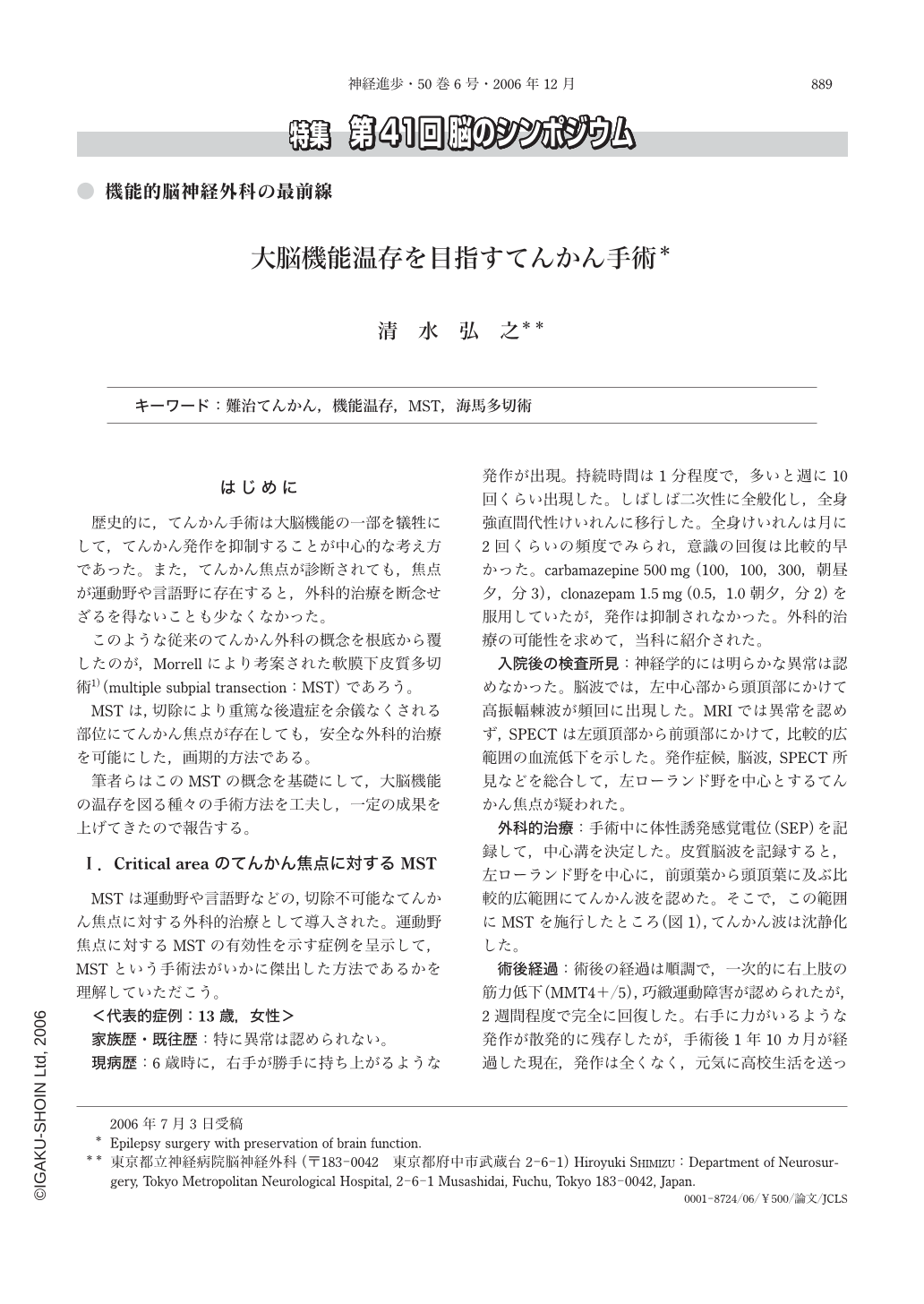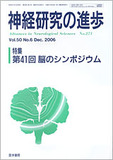Japanese
English
- 有料閲覧
- Abstract 文献概要
- 1ページ目 Look Inside
- 参考文献 Reference
はじめに
歴史的に,てんかん手術は大脳機能の一部を犠牲にして,てんかん発作を抑制することが中心的な考え方であった。また,てんかん焦点が診断されても,焦点が運動野や言語野に存在すると,外科的治療を断念せざるを得ないことも少なくなかった。
このような従来のてんかん外科の概念を根底から覆したのが,Morrellにより考案された軟膜下皮質多切術1)(multiple subpial transection:MST)であろう。
MSTは,切除により重篤な後遺症を余儀なくされる部位にてんかん焦点が存在しても,安全な外科的治療を可能にした,画期的方法である。
筆者らはこのMSTの概念を基礎にして,大脳機能の温存を図る種々の手術方法を工夫し,一定の成果を上げてきたので報告する。
Multiple subpial transection(MST), reported by Morrell in 1989, is an epoch-making surgical technique which first made it possible to surgically treat epilepsy with preservation of brain function even if the epileptic focus exists in the critical area such as motor or speech areas.
In pediatric epileptic patients with intractable generalized seizures, including drop attacks, generalized tonic seizures and atypical absence, psychomotor developmental delay may occurs. Corpus callosotomy is very effective for these severe generalized seizures and prevent deterioration of psychomotor function. However, postoperative advance of cognition is unexpectedly worse when active epileptic discharges remain in the frontal lobe. To cope with this problem, extensive MST over the frontal neocortex with/without frontopolar disconnection brings significant improvement of cognition with further control of residual seizures.
In temporal lobe epilepsy, almost 70-80% patients who underwent temporal lobectomy become seizure-free. However, in cases with left temporal focus without hippocampal atrophy on preoperative MRI, postoperative deterioration of verbal memory is inevitable. We recently developed a new surgical technique, called hippocampal transection. With this method, postoperative deterioration of verbal memory in left temporal lobe epilepsy can be avoided and a good seizure outcome compatible with temporal lobectomy is also obtained. A late onset left temporal lobe epilepsy without hippocampal atrophy will be best suitable for this new treatment.

Copyright © 2006, Igaku-Shoin Ltd. All rights reserved.


